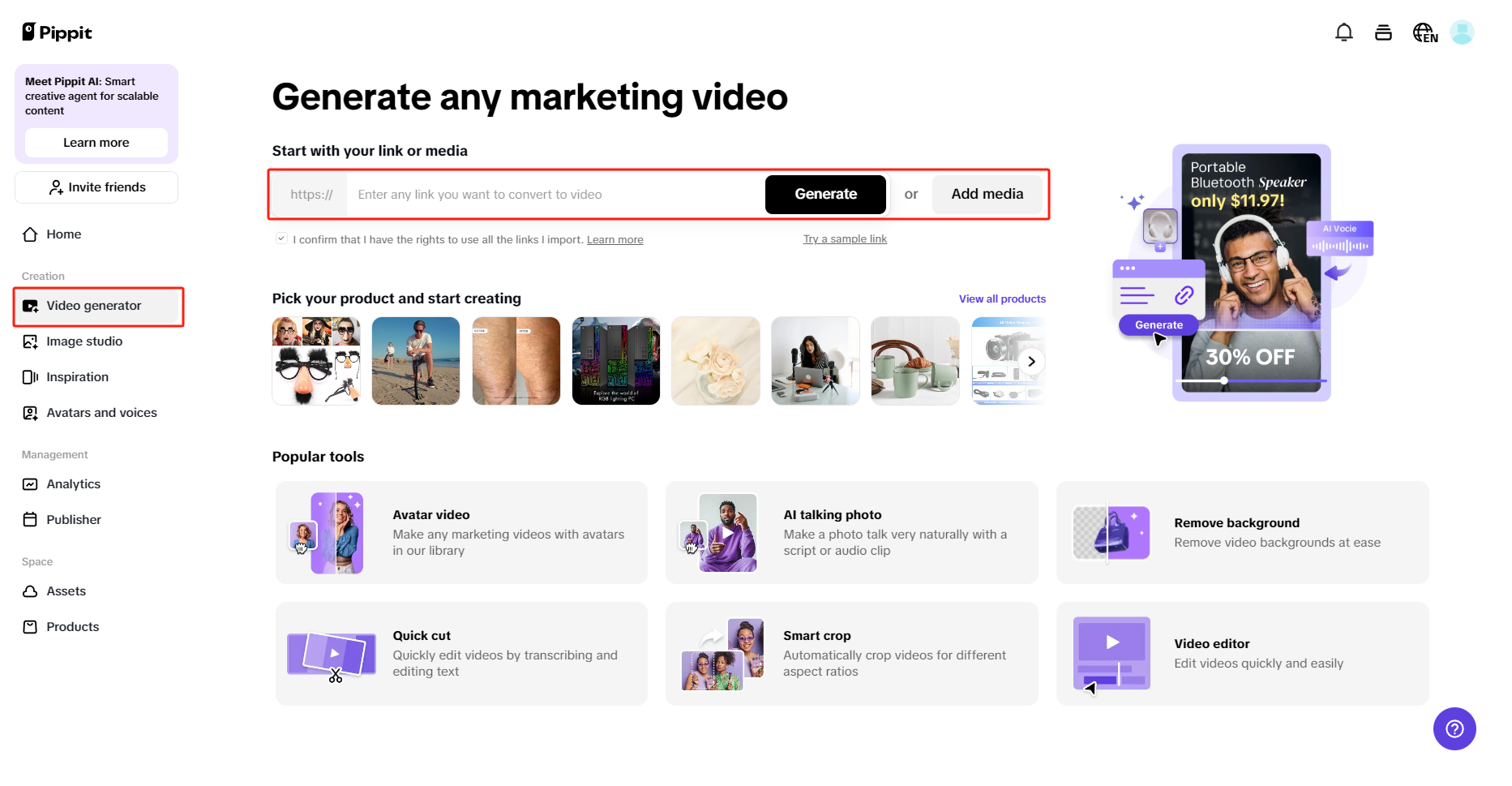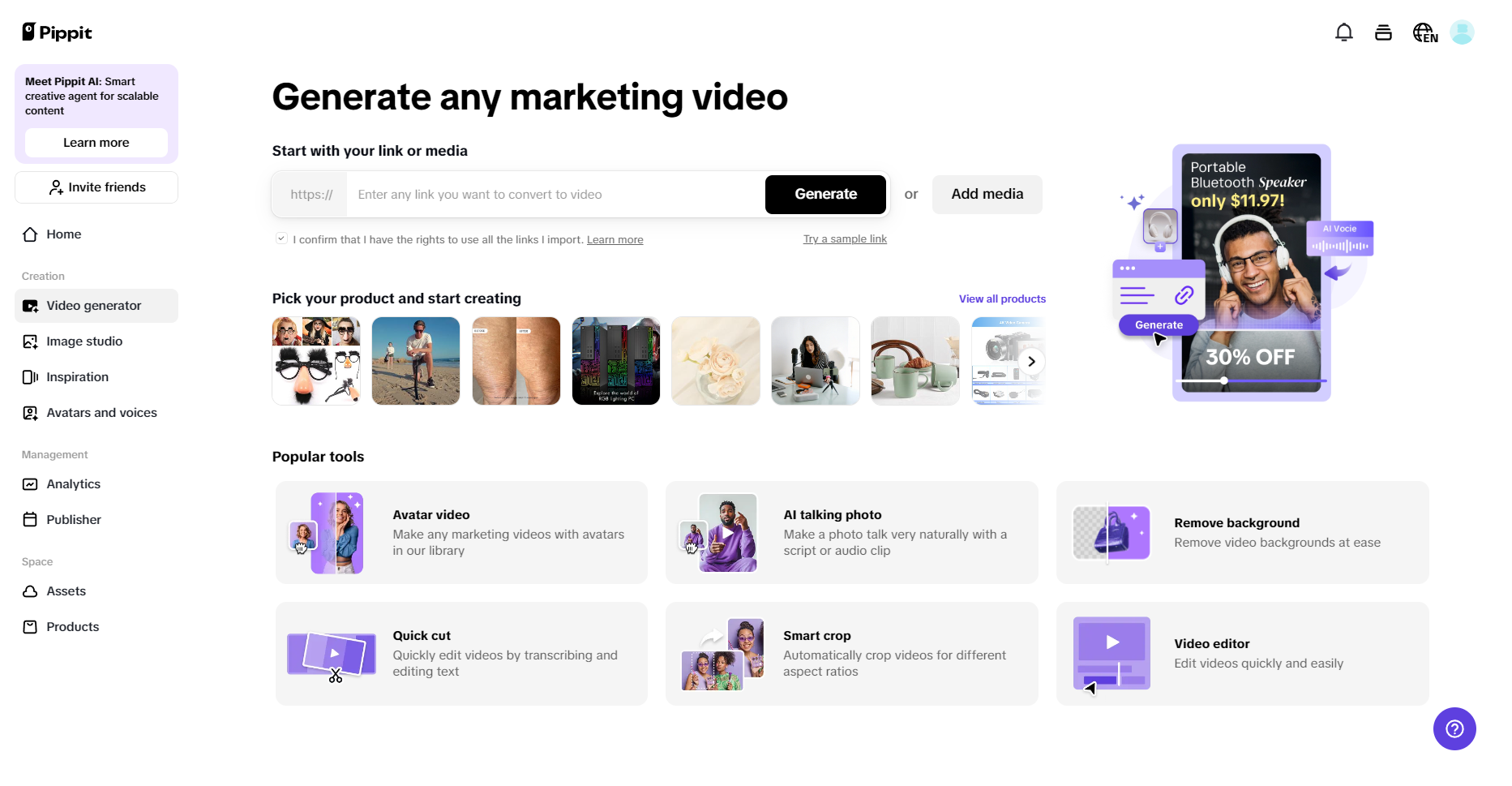In the fast-evolving digital landscape, creating engaging content is more important than ever. Video has emerged as the most compelling way to connect with audiences, making it a key element of any content strategy. However, producing high-quality videos can be challenging, especially for those without advanced editing skills or large production budgets. This is where an AI video editor makes a difference.
AI-powered tools simplify the video editing process, enabling users to create professional-grade content effortlessly. With smart automation, customizable templates, and trend-driven enhancements, these platforms help businesses, creators, and marketers produce stunning videos in a fraction of the time—without the need for technical expertise.
How AI video editors are transforming content creation
1. Faster and more efficient editing
AI-powered video editors streamline the entire editing process by automatically cutting unnecessary clips, applying smooth transitions, and adjusting audio levels. This automation reduces the time spent on editing while maintaining high-quality results.
2. Smart features for enhanced creativity
Modern AI video editors come with intelligent features such as automatic subtitles, background music suggestions, and AI-generated voiceovers. These tools, powered by an advanced AI video generator, help creators produce engaging content with minimal effort, ensuring videos align with industry trends.
3. User-friendly and accessible to all
Unlike traditional editing software that requires extensive learning, AI video editors offer intuitive interfaces, drag-and-drop functionality, and pre-designed templates. Whether you're a beginner or a seasoned professional, these tools allow anyone to create high-quality videos with ease.
Pippit: AI-powered editing made simple
AI-driven tools like Pippit make professional video editing accessible to businesses, marketers, and creators. With features such as automatic product detection from URLs and trend-based content suggestions, it helps users create compelling videos effortlessly. Whether for e-commerce, social media, or branding, Pippit streamlines the video creation process while delivering high-impact results.
Edit videos in just one click through Pippit
Step 1: Upload your footage
Go to the “Video Generator” section in Pippit and click “Add Media” to upload your raw video clips or footage. The user-friendly interface makes it easy for both beginners and professionals to get started smoothly. Take advantage of the AI Auto Video Editor to instantly enhance your footage, apply smart adjustments, and streamline the editing process.
 Step 2: Let AI edit your video
Step 2: Let AI edit your video
Utilize the AI Video Generator in Pippit to automatically analyze and refine your clips. The AI editor applies smart transitions, optimizes timing, and enhances video quality to deliver a polished, professional result in just seconds. Explore creative features like slow-motion effects or split-screen layouts to make your video more dynamic and engaging.

Step 3: Customize, export, and share
Make your video stand out by adding text, adjusting the script, or applying special effects. Once you're happy with the final edit, export it in high resolution and seamlessly share it across platforms like TikTok and Instagram using Pippit’s optimized settings for each platform.
The future of AI in video editing
As AI technology advances, video editing is becoming smarter, more efficient, and highly personalized. Future developments will continue to enhance automation, creativity, and audience engagement, making AI video editors indispensable tools for content creators, businesses, and marketers. Here’s a closer look at what the future holds for AI-driven video editing.
1. Real-time AI-powered scripting
One of the most exciting possibilities for AI video editing is real-time AI-generated scripting. AI could analyze user preferences, trending topics, and audience behavior to suggest compelling narratives instantly. This feature would help creators structure their videos more effectively, ensuring maximum engagement while reducing the time spent on content planning.
2. Automatic scene generation and editing
Future AI video editors will go beyond simple automation by generating entire scenes based on content themes. Advanced algorithms may be able to analyze video footage and automatically suggest the best shots, transitions, and effects. This will allow users to create high-quality videos with minimal manual intervention, further streamlining the editing process.
3. Personalized content creation with AI
AI-driven personalization is already making waves in marketing, and video editing will follow suit. Future AI tools may tailor video elements—such as music, color schemes, and graphics—based on viewer preferences. By dynamically adjusting content to suit different audience segments, AI will help businesses and creators produce highly targeted, more effective videos.
4. Enhanced AI-driven voiceovers and dubbing
AI-powered voice synthesis and dubbing will continue to improve, making it easier to produce multilingual content with natural-sounding narration. This advancement will benefit global brands and content creators looking to expand their reach without the need for expensive voiceover artists or translators.
5. Predictive analytics for engagement optimization
AI’s ability to analyze video performance will become even more sophisticated. Future AI editors may provide real-time feedback on elements such as pacing, visual appeal, and storytelling effectiveness. By leveraging predictive analytics, content creators will be able to fine-tune their videos for higher engagement, increased watch time, and better conversion rates.
Conclusion
AI video editors are revolutionizing content creation by making high-quality video production faster, easier, and more accessible. Whether you're a business owner, marketer, or content creator, leveraging AI-powered editing tools can help you stay ahead in the competitive digital landscape. With innovative features and automation, these tools empower anyone to produce engaging videos that captivate audiences and drive results.






